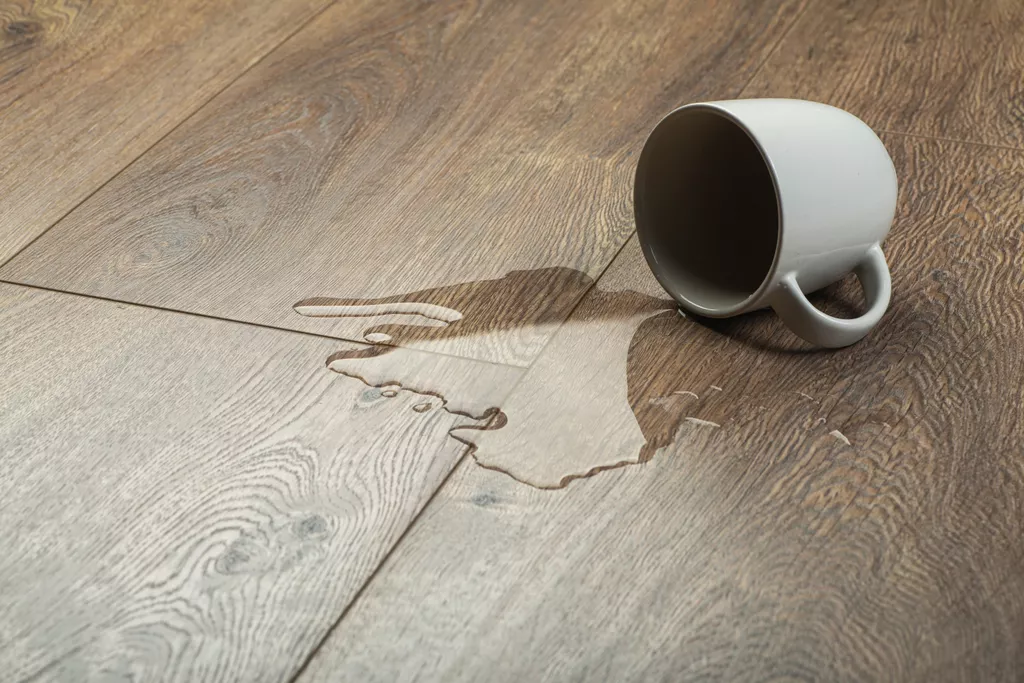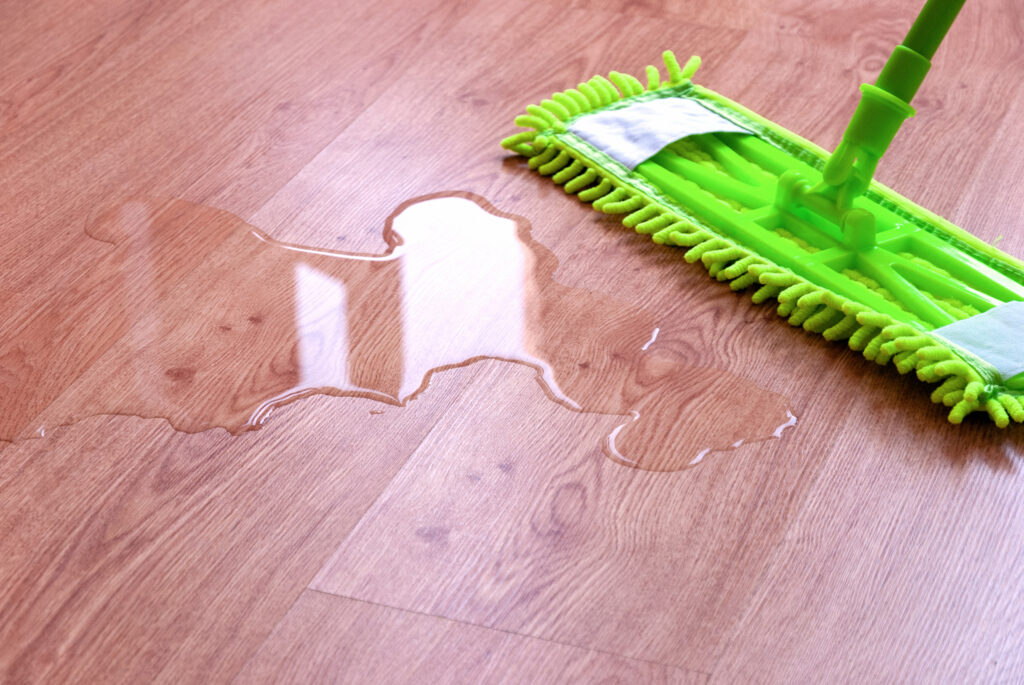Have you ever stared at your laminate floors, wondering if a simple water mop is the best way to clean them? You might feel like a splash of water is all it takes to make them shine again. But hold on! While the simplicity of a water mop might seem tempting, it’s not always the best approach for your beautiful laminate floors. Let’s dive into the world of laminate floor care, uncovering the secrets to maintaining a sparkling clean and long-lasting surface.

Image: www.thumbtack.com
Laminate flooring has become a popular choice for homeowners due to its durability, affordability, and elegance. But just like any other flooring material, laminate requires specific care to keep it looking its best. While water is essential for cleaning, using it incorrectly can lead to unwanted consequences, such as warping, swelling, and even damaging the protective coating.
Understanding Laminate Flooring and Its Limitations
Laminate flooring is a composite material crafted from layers of materials, including a wear layer that provides the visual appeal and durability. This wear layer is often coated with a protective finish, typically a melamine resin or a polyurethane sealant. This protective layer acts as a barrier against scratches, stains, and spills, but it’s not impervious to water.
The core of the laminate flooring, which is sandwiched between the wear layer and a backing layer, is typically made from HDF (high-density fiberboard) or MDF (medium-density fiberboard). These materials are susceptible to moisture damage when exposed to prolonged or excessive amounts of water. That’s why simply mopping with water alone isn’t the ideal solution for laminate floors.
The Risks of Mopping Laminate Floors with Water
While a quick wipe-down with a damp mop might seem harmless, regularly mopping laminate floors with only water can lead to a cascade of problems:
- Warpage and Swelling: When water seeps through the wear layer and gets into the core, it can cause the laminate boards to swell and warp. This can create unsightly gaps, uneven surfaces, and even compromise the structural integrity of the flooring.
- Damage to the Protective Coating: Excessive moisture can weaken the protective layer, leaving the laminate susceptible to scratches, stains, and fading. This can lead to a dull, worn appearance and shorten the lifespan of your flooring.
- Mold and Mildew Growth: Water trapped beneath the laminate can create a breeding ground for mold and mildew, especially in humid environments. These microorganisms can cause health problems and damage the flooring.
Safe and Effective Cleaning Methods for Laminate Floors
Maintaining the beauty and integrity of your laminate floors requires a smart approach to cleaning. Here’s a step-by-step guide:
1. Sweeping and Vacuuming: Start by removing loose dirt, dust, and debris with a broom or a vacuum cleaner equipped with a soft brush attachment. This is the first line of defense against particles that can scratch the delicate wear layer.
2. Diluted Cleaning Solutions: Instead of relying solely on water, use a mild cleaning solution specially formulated for laminate floors. These solutions are designed to clean effectively while minimizing the risk of damaging the flooring. Follow the instructions provided on the product label carefully.
3. Damp, Not Soaked: When mopping, use a damp mop, not a soaking wet one. Wring out the mop thoroughly before applying it to the floor. Avoid using excessive water, as this can lead to the problems mentioned earlier.
4. Microfiber Mops: Microfiber mops are excellent choices for cleaning laminate floors. They are highly absorbent, cleaning effectively while leaving behind minimal moisture.
5. Dry Thoroughly: After cleaning, always dry your laminate floors thoroughly. You can use a dry mop, a soft cloth, or let the floor air dry completely.

Image: www.carpetguys.com
Expert Tips for Spotless Laminate Floors
Here’s a roundup of expert tips to keep your laminate floors clean and vibrant:
- Clean up spills immediately: Act fast to prevent stains and potential moisture damage. Blot up spills with a clean cloth or sponge, blotting from the outside inwards to prevent spreading.
- Avoid abrasive cleaners: Harsh chemicals, such as bleach or ammonia, can strip the protective coating on your laminate floors. Stick to gentle, laminate-friendly cleaning solutions.
- Use furniture pads: Place protective pads under heavy furniture to prevent scratches and damage to the wear layer.
- Regular maintenance is key: Consistent cleaning and maintenance will help to preserve the beauty and longevity of your laminate flooring.
Can I Mop Laminate Floors With Water
https://youtube.com/watch?v=EIs0knxSXOE
Conclusion
Mopping laminate floors with water alone can be a risky proposition, potentially leading to damage and compromising the lifespan of your flooring. By embracing a more cautious approach and utilizing gentle cleaning solutions and techniques, you can ensure the sparkle and longevity of your laminate floors. Remember, a little knowledge can go a long way in maintaining the beauty of your home.






